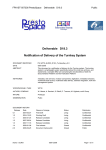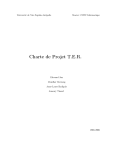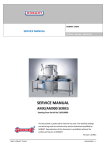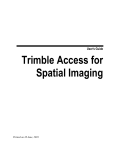Download Specification of processes and digital formats
Transcript
DELIVERABLE Project Acronym: EFG1914 Grant Agreement number: 297266 Project Title: EFG1914 D2.1: Specification of processes and digital formats Revision Date of submission Author(s) Dissemination Level V1.5 30.07.2012 Thomas C. Christensen (Det Danske Filminstitut), Bruno Mestdagh – (Cinémathèque Royale de Belgique), Florian Schleich – (Fraunhofer Institute for Integrated Circuits IIS), Julia Welter (Deutsches Filminstitut) Public Project co-funded by the European Commission within the ICT Policy Support Programme REVISION HISTORY AND STATEMENT OF ORIGINALITY Revision History Revision No. 1.0 Date 15.06.2012 1.1 22.06.2012 1.2 25.06.2012 1.3 27.06.2012 1.4 12.07.2012 1.5 16.07.2012 Author Thomas C. Christensen, Florian Schleich Thomas C. Christensen, Uffe Smed Organisation DFI, IIS Description Content contribution DFI Bruno Mestdagh Florian Schleich Florian Schleich, Bruno Mestdagh Julia Welter CRB Compiling parts of the report and editing the content Content contribution Content contribution Content contribution (Revision) IIS IIS, CRB DIF Content contribution + Revision Statement of originality: This deliverable contains original unpublished work except where clearly indicated otherwise. Acknowledgement of previously published material and of the work of others has been made through appropriate citation, quotation or both. D2.1 Specification of processes and digital formats 2 Index 1 Introduction .......................................................................................................... 4 2 Digitisation of Analogue Film Elements......................................................... 5 2.1 Film Element Selection ..................................................................................... 5 2.2 Analogue to Digital Transfer (Digitisation)......................................................... 5 3 Curator Archive Suite Workflow ...................................................................... 6 3.1 Introduction and Formats .................................................................................. 6 3.2 The General Curator Archive Suite workflow .................................................... 9 3.3 The Curator Creator Workflow ........................................................................ 10 3.4 The Curator Player workflow........................................................................... 10 3.5 The Curator Archive Suite JPEG2000 QuickTime Workflow........................... 11 3.6 Interlaced workflow ......................................................................................... 12 3.7 Subsample (4:2:2) workflow............................................................................ 13 3.8 Step-by-step example ..................................................................................... 14 4 Encoding and handling outside the Curator Suite – DPX and Final Cut Pro workflow.......................................................................................................... 18 5 6 7 8 9 4.1 Digitizing films from the silent era: a stretching exercise................................. 18 4.2 Using the Change Speed Dialogues in FCP ................................................... 19 Preservation and digital storage ................................................................... 20 File Formats ....................................................................................................... 23 6.1 Delivery / distribution....................................................................................... 23 Off-site hosting of digital content on reelport ............................................. 24 Summary ............................................................................................................ 25 References ....................................................................................................... 26 D2.1 Specification of processes and digital formats 3 1 Introduction The purpose of the EFG1914 project is to digitize and bring online 654 hours of moving image content relating to the First World War. In order to facilitate the project’s goal, this report will specify the most useful video file delivery format and the digital workflow to create this format. In parallel, another important benefit of the EFG1914 project is the establishment of the skills and workflow within the participating film archives to be able to manage theatrical grade digital film elements. The report will describe a specific part of the digital cinema workflow; the preservation master creation and how to provide distribution formats from this master, as well as point to other reports that address the parts not covered by this report. Within the area of moving images there are a plethora of formats and sub-formats. The aim of this report is to point to the most relevant and robust workflows and identify a pragmatic approach for the participating film archives. The parts of the digital workflow covered by this report are: 1. Ingest of HD, 2K or 4K cinema elements, such as DPX, TIFF or HD video into the Curator Archive Suite (or a similar post-production suite). Handling of cinema master files is still a new activity in film archives, and thus hardware, software, and skill requirements, are very different from one archive to the other. A primary objective of the project is that film archives establish a common knowledge base, which will enable them to benefit and learn from each other's experiences and skills. 2. Specification of the relevant profiles and detailed instructions for the creation of digital long-term master files. There will be basic guidelines as to which formats and profiles are the most robust for mastering. The report will briefly describe the principles for preservation of the master files, but mainly point to other resources in this area, as long term preservation of large data repositories is still not a mature field within film archives. 3. Specification and guidelines on how to encode and deploy moving images suitable for display in EFG1914. This report will only point to the currently most relevant mezzanine and web-formats. For partners with an already established link to the European Film Gateway, or for new partners with already established flash servers, the existing platforms will continue to be supported, based on the specifications in the EFG D4.3 report. 1 The European Film Gateway supports embedded display of moving image stream files, as well as JPEG files for still images. Other file types such as PDF, etc., are searchable and listed on the EFG portal and linked to via the film archive’s own web-pages. Currently, many films are displayed as flash video within the sizes: 400x300 pixel, 500kbs (minimum) and 768x572 pixel, 2Mbit/s (maximum). These file specifications are a pragmatic compromise between a minimum quality and offering content at a bitrate that gives an acceptable playback experience for most users. The EFG1914 will point to MPEG4, approximately 1 Mbit/s, as a more “future proof” delivery format, since it is both HTML5 compatible and will display on most current platforms. 1 See http://www.efgproject.eu/downloads/D4-3_Guidelines%20for%20digitization_20091030.pdf D2.1 Specification of processes and digital formats 4 2 Digitisation of Analogue Film Elements 2.1 Film Element Selection Work Package 1 and report D1.2 deal with the selection of titles for the project, which is a natural requirement for any digitisation project. Once the title selection is in place, but before the actual digital transfer, a number of physical tasks and element priorities need to take place. Based on the individual title it is often possible to locate several film elements relating to a single film. Sometimes the provenance of a specific element is clear, sometimes not. Even if the most original element is the one containing the greatest quality, there can be many reasons to choose a subsequent element for the digital transfer. If the original is a fragile nitrate element, it is both very costly and delicate to handle. Also, an analogue preservation element may have been duplicated using wet-gate, which would have eliminated many of the scratches that are typically present in a nitrate original. In the selection of the relevant element for scanning, there are thus many issues to take into consideration, which all lead to a higher or lower price tag and quality in the end. For EFG1914, the estimated cost of digital transfer is based on good condition film elements, requiring only basic physical preparation and handling. 2.2 Analogue to Digital Transfer (Digitisation) EFG1914 makes a distinction between preservation grade quality and distribution grade quality. The fact that digital distribution files and masters can be replaced by re-digitizing preservation elements, albeit at a cost, makes it possible to choose less costly conservation solutions for distribution files. Since items selected for preservation are considered artefacts of unique cultural value no compromises should be made in the preservation standards applied to these items. The digitisation cost in the project allows for theatrical grade transfers, but not necessarily for full quality replacement digitisation; that is, the resulting master files should be regarded as a digital backup of the analogue elements, but not typically a replacement allowing for the discarding of the analogue originals. Once the relevant elements for digitisation have been identified and prepared (physical restoration, extra head and tail leader, film cleaning, etc.), there are several possible routes available for the actual digitisation. Some archives already own scanners, which will allow them to scan some or all types of films, whereas other archives rely on external providers to offer scanning. This report will not get into the specifics of scanning, suffice it to say that film scanning is not a routine task, but a title by title job requiring individual attention to both the film element and scanner chosen to a specific task. The Technical Commission of the International Federation of Film Archives (FIAF) has produced a number of Digital Technology Guidance Papers, available from http://www.fiafnet.org/uk/publications/fep.html that provide guidelines and list many of the issues to address in connection with the film to digital process. However, each of the archive partners will be making their own selection of elements and film scanning equipment based on their local experiences and availability of cost efficient equipment. Even if the actual analogue to digital transfer remains a non-standardized activity; depending on everything from the film transport, lenses and light source to the operator's manual grading controls, most scanners deliver only a few relevant digital file formats, such as DPX or a HD-SDI video stream. The following chapters will address how to manage, check and convert these formats into the relevant master formats and delivery to the European Film Gateway and Europeana. D2.1 Specification of processes and digital formats 5 3 Curator Archive Suite Workflow (based on [“Summary of the EDCINE Project – Archival applications, A”] and[“Curator Archive Suite Workflow Description 1.2”]) Fraunhofer IIS is contributing to EFG1914 by providing technical expertise and experiences, helping to plan, evaluate and set up digitization and encoding processes and helping to train and educate the participating archives and their staff in workshops, such as the forth-coming “Standardisation and Digitisation Best Practice” Workshop hosted by the Cinémathèque royale de Belgique (WP4). With the Curator Archive Suite, Fraunhofer IIS has developed a software that fits perfectly into the context of EFG1914. The Curator Archive Suite is a set of software products that can be used to convert different types of source material into JPEG2000 / MXF archive packages and to retrieve the original uncompressed images and sound data, as well as alternative dissemination formats, from these packages. In order to enable archives to create the necessary preservation and dissemination formats and to promote an open and standardized archive master format, Fraunhofer IIS is providing a special version of the Curator Archive Software for free within EFG1914. The availability of the software will be announced on the EFG1914 email reflector, supposable August this year. Interested archives can then request installers and licenses. 3.1 Introduction and Formats The Curator Archive Suite is based on the developments that Fraunhofer IIS achieved within the EDCINE Project between 2006 and 2009. EDCINE was a European research project with 20 partners, funded by the European Commission in Framework Programme 6. The goals of the project were optimization, enhancement and development of new technologies for Digital Cinema in Europe. Three major application fields have been addressed within the project: content streaming to digital cinema, advanced movie experience and digital archives and access to archives. Together with Cinémathèque royale de Belgique and MOG Solutions, Fraunhofer IIS developed a system concept for digital film archiving and specified universal and open file formats for digital film archiving. The system concept, as seen in fig 1, uses a two-tier architecture with different file formats for long-term storage and for online storage for more frequent access. Archived material may be stored in either one of the two formats or in both formats simultaneously. Both formats use a combination of JPEG20002 compressed images and uncompressed sound, wrapped into MXF 3 files. F 2 3 ISO/IEC 15444 Material Exchange Format: SMPTE 377M D2.1 Specification of processes and digital formats 6 Fig. 1 - EDCINE system architecture [“Summary of the EDCINE Project – Archival applications, A”] The Master Archive Package (MAP) format is intended as a long-term storage format with the possibility to conserve all information that is present in the source material. Therefore, the JPEG2000 profile that is used in this package allows selecting mathematical lossless compression. Sound is stored uncompressed. While there is a theoretical maximum of 16K, any resolution can be stored in this package from SDTV up to the most demanding scanned film. The bit depth can also be freely chosen up to 16 bits per colour component in any colour space. When using lossless compression, the compression ratios are typically about 2:1. For special applications, the Master Archive Package can also use lossy compression to achieve better compression ratios where there is no need for a bitwise identical representation of the original material. This is mainly recommended for originally compressed captured TV material, like movies from HDCAM-SR tape, Digital Betacam, DVCPRO or XDCAM. A lossless storage would unnecessarily increase the data rate. The key specifications of the MASTER ARCHIVE PACKAGE are within the limitations of JPEG2000 and AES recommended practices: • Image resolution up to 16K (16384 x 8640) • Any image frame aspect ratio • Any image bit depth (only limited by JPEG2000 maximum bit depth, which is for practical implementations 32 bits per component) • Any colour space • Any frame rate • Image components up to 8 • Mathematically lossless compression for image content (can also be lossy if required, e.g. when archiving an already compressed DCP) • Audio data in RAW format (optional MPEG-4 SLS) D2.1 Specification of processes and digital formats 7 • No audio sampling restrictions (at least support of recommended values as in AES54) • No restrictions for word length in audio (at least 16 bit or 24 bit) • Discrete (i.e. no matrix encoding) audio channels (unrestricted number) • MXF wrapper. No limitation on the Operational Patterns, implementation is currently restricted to Op Atom The Intermediate Access Package (IAP) format is intended as a very high quality digital access copy of an archived film. All parameters have been defined in a way to make it easily possible to create Digital Cinema Packages (DCP) from this format while having the possibility to retain extra information and image quality to also use it as a starting point for the conversion to other formats, ranging from HDTV broadcast masters down to preview videos for the internet. The IAP can exist in two varieties: 2K or 4K. Both use lossy JPEG2000 compression and allow a maximum data rate of 500 MBit/s at 12 bits per colour component in the XYZ colour space. Sound is stored uncompressed. The IAP is especially suitable where the MAP of a film has a very large size that makes it impracticable for everyday handling and usage. It can also be used as a distribution master for material that is preserved on film where no lossless MAP exists. The decision if an MAP or an IAP or both packages are created for a film depends on the strategy of an archive. This decision can be taken on a case-by-case basis or per collection with regard to the preservation strategy and the condition of the original material. The key specifications of this INTERMEDIATE ACCESS PACKAGE are within the limitations of JPEG2000 and AES recommended practices: 4 • Image resolution up to 2k (2048 x 1080) or 4k (4096 x 2160) (depending on adopted profile) • Any image frame aspect ratio • Image bit depth up to 12 bits • Any frame rate • Image components: up to 3 • Compression aimed to produce a maximum bit rate to match the highest requirements for distribution (at the moment those for D-Cinema, whose standards are currently being finalized) • Audio data in RAW format (optional MPEG-4 SLS) • 48kHz or 96kHz audio sampling frequencies • 16 bit or 24 bit word length for audio See http://www.aes.org/publications/standards/ D2.1 Specification of processes and digital formats 8 • Discrete (i.e. no matrix encoding) audio channels (up to 16 channels) • MXF wrapper. No limitation on the Operational Patterns, implementation is currently restricted to Op Atom It is for every archive to decide whether it makes sense to create and store a MAP and/or an IAP. A lossless compressed MAP does not lose any of the original information, but therefore needs significantly more storage space compared to an IAP. The IAP is a rather compact but high-quality archive package, but its lossy compression will drop some of the original information. 3.2 The General Curator Archive Suite workflow The components of the Curator Archive Suite provide a solution for the round trip from uncompressed source formats to archive packages and back to uncompressed formats again. Fig. 2 gives an overview of the Curator Archive Suite workflow. Fig. 2 - Overview of processes [“Curator Archive Suite Workflow Description 1.2”] The source image material can be provided in three different formats: uncompressed DPX sequences, QuickTime .mov files that use any codec that is installed on the computer system or QuickTime .mov files that are created using the JPEG2000 QuickTime codec that is provided with the Curator Archive Suite. Additionally, images that have already been encoded to the appropriate JPEG2000 profile can be imported from J2C sequences. Sound files can be provided in the WAV format or sound can be imported together with images from QuickTime .mov files. Descriptive metadata can be imported from XML files. The Curator Archive Suite Creator software can be used to convert images, sound and metadata from the source formats to archive packages that consist of MXF files containing JPEG2000 compressed images and sound as well as additional XML files containing metadata and playback control information. The Curator Software runs on almost every Windows PC (WindowsXP™, Windows Vista™, Windows 7) or Intel Mac (min. MacOS 10.5) with 2 GB of RAM and 100 MB of free disk D2.1 Specification of processes and digital formats 9 space. Multicore CPU(s) and a fast I/O system are recommended, but no special hardware decoder cards are required. 3.3 The Curator Creator Workflow Curator Creator is the central component of the Curator Archive Suite. It is used to create archive packages and Digital Cinema Packages. This includes encoding the source image material to JPEG2000, wrapping encoded images and sound in MXF files and creating XML file for metadata and playback control. Fig. 3 shows the steps comprising the process of creating an archive package. Before using Curator Creator all source material has to be brought to formats that can be processed by the Creator. Descriptive metadata for the package has to be converted to an XML file, e.g. by exporting it from a database. After starting the Creator basic settings for this package have to be made. Then, images, sound and metadata are imported into the application. In a next step, images and sound are arranged in reels that belong together and descriptive metadata is added. At this point, there exists the possibility to add and adjust several technical metadata elements that are also stored in the package. The final step is to start the process of creating the archive package. Now, the MXF and XML files that comprise the package are created. Fig. 3 - The Curator Creator workflow [“Curator Archive Suite Workflow Description 1.2”] 3.4 The Curator Player workflow The Curator Player serves two purposes: to view and playback MAPs, IAPs, DCPs and Samma Solo MXF files, and to extract J2C or DPX and WAV files from the packages for subsequent use in other applications. In that sense, Curator Creator and Player allow a round trip process from uncompressed DPX + WAV source material to JPEG2000 / MXF Archive Packages and back to DPX + WAV files. The Player also incorporates a viewer for technical and descriptive metadata that allows detailed inspection of the content of the archive package. After starting the Curator Player, an archive package is opened and loaded. Now, the user can choose to play back images and sound, inspect metadata or extract uncompressed D2.1 Specification of processes and digital formats 10 image and sound files to the hard disk. Figure 4 gives an overview of the process. It is also possible to make use of the scalability features of JPEG2000 to be able to play back highresolution packages in real-time. This is possible because JPEG2000 allows extracting and decompressing a fraction of the original resolution that is stored in a compressed file without having to read and decompress the complete files. This leads to substantial savings in decompression time and therefore allows real-time playback even on lower performance computers. Fig. 4 - The Curator Player workflow [“Curator Archive Suite Workflow Description 1.2”] 3.5 The Curator Archive Suite JPEG2000 QuickTime Workflow The Curator Archive Suite JPEG2000 QuickTime Codec is an additional software component that can be used to compress images to the JPEG2000 format directly in any QuickTime aware editing or ingest software. This makes it possible to export directly to the JPEG2000 format from applications like Apple’s Final Cut Pro. In a typical workflow, videotapes are ingested into the computer system using Final Cut Pro. After adjusting in and out points and checking audio sync, the material is exported to a .mov file using the Curator Archive Suite QuickTime JPEG2000 codec. In the next step of the process this file is then opened in the Curator Creator software that reads the JPEG2000 content of the .mov file and re-wraps it into MXF files to create an Intermediate Access Package or a Master Archive Package. In this case the relevant JPEG2000 encoding parameters, like lossless or lossy compression and data rate, are set in the QuickTime codec before exporting from Final Cut Pro. An overview of the process up to the creation of a JPEG2000 .mov file and its storage on the hard disk can be found in Figure 4. D2.1 Specification of processes and digital formats 11 The Curator Archive Suite JPEG2000 QuickTime codec supports JPEG2000 profiles for MAP, IAP and DCP. It supports RGB and YCBCR material with bit depths of up to 16 bits per component. Fig. 5- The Curator QuickTime workflow [“Curator Archive Suite Workflow Description 1.2”] 3.6 Interlaced workflow In case you are not only working with scanned film but also with e.g. digital video, it might become necessary to handle interlaced material. For archiving purposes it makes sense to store the material as is, instead of applying a de-interlacing step first, to avoid any data loss in the de-interlacing process. The handling of interlaced material is supported by using the Fraunhofer QuickTime JPEG2000 Component. If the QuickTime Component runs in interlaced mode, two separate fields will be encoded as two separate JPEG2000 code streams. The input frame is expected as a single frame of two combined fields. The host application is responsible to deliver the de-interlaced frame in this specific format and shall only use the weave algorithm (field insertion) to de-interlace, otherwise the original fields cannot be reconstructed. If deinterlacing is rendered with a different algorithm (e.g. smoothing, skip field, bobbing (line averaging), blending, adaptive, motion compensation), the QuickTime Component cannot reconstruct the original fields, which results in a lossy encoding. D2.1 Specification of processes and digital formats 12 Quicktime-aware video editing application Ingest interlaced material from video tape Curator JPEG 2000 Quicktime Codec Arrange material in timeline Export using JPEG 2000 Quicktime component Select Interlacing-Algorithm Field 1 Field 2 De-Interlacing Shall be Weave (field insertion ) Separate fields Field 1+2 1. Temporal Top First 2. Temporal Bottom First 3. Spatial First Line Early Combined fields 4. Spatial First Line Late Field 1 Field 2 Separate JPEG 2000 Codestreams Storage Fig. 6 - JPEG 2000 QuickTime workflow with interlaced material [“Curator Archive Suite Workflow Description 1.2”] Finally, the resulting QuickTime *.mov file, containing interlaced frames, can directly be ingested in the Curator Creator and repacked into an MAP without time consuming reencoding. 3.7 Subsample (4:2:2) workflow The Curator Archive Suite does also support sub-sampled inputs like e.g. ProRes 422 files. The handling of sub-sampled material is supported by using the Fraunhofer QuickTime JPEG2000 Component. If the QuickTime Component runs in sub-sampling mode, subsampled JPEG2000 code streams will be encoded. Depending on the sub-sampling scheme, the input frame is expected as a single frame or as two interlaced fields (see3.6 Interlaced workflow). D2.1 Specification of processes and digital formats 13 Quicktime-aware video editing application Ingest subsampled material from video tape Frame Curator JPEG 2000 Quicktime Codec Arrange material in timeline Subsampling Shall be 4:2:2 Subsampled Frame Export using JPEG 2000 Quicktime component Select Subsampling Scheme Frame Subsampled 4: 2:2 Frame 1. 4:2:2 8 Bit 2. 4: 2:2 10 Bit 3. 4:2: 2 10,12,14,16 Bit Frame Subsampled 4: 2:2 JPEG 2000 Codetream Storage Fig. 7 - JPEG 2000 QuickTime workflow with sub sampled material [“Curator Archive Suite Workflow Description 1.2”] Finally, the resulting QuickTime *.mov file, containing sub-sampled frames, can directly be ingested in the Curator Creator and repacked into an MAP without time consuming reencoding. 3.8 Step-by-step example Creating the archive master file This example explains the necessary steps to create a JPEG2000/MXF archive master file and a H264 file to be made available via the EFG1914 portal. First, start Curator Creator, enter a name for you project and select “MAP” as the project type. Choose the correct frame rate for your material. Select the original frame rate, e.g. 17fps, not the frame rate that was used for scanning/digitizing. A click on the “Create” button creates an empty project with the selected properties and opens the main workspace window. D2.1 Specification of processes and digital formats 14 Fig. 8-New project settings window In the main workspace window (fig 10), start with loading pictures (and sound, if applicable) into the Track file list. Therefore, click the “Add Picture Track” button and select the first image of your picture file sequence - or the single QuickTime file. Fig. 9- Track file dialogue Arrange the Track files by dragging and dropping them into the filmstrip on the right side of the main window. If you want to include any descriptive metadata in the package, you can D2.1 Specification of processes and digital formats 15 load a XML file in the centre of the workspace by checking “Include descriptive metadata file:” and clicking the file open button “…”. By right-clicking the Track files in the Track file manager on the left, you can add some Metadata like original colour space and start time code of the sequence. When everything is arranged and entered, you just click the red “Generate Package…” button to proceed to the generation dialogue. Fig. 10- Curator creator main workspace window In the generation dialogue you have to select an output folder, where the MAP will be generated. You can select a maximum bitrate for the encoded pictures, if you want to use a lossy JPEG2000 compression. If you want to go lossless, just check the corresponding box. As soon as you click “Start!” the package generation will start. Fig. 11- Package generation dialogue D2.1 Specification of processes and digital formats 16 Creating the streaming file The streaming file for the EFG1914 website can be created directly from the archive master file, using Curator Player. Therefore, start Curator Player and load the MAP. Dragging and dropping the MAP folder into the Curator Player playback window can easily do this. Fig. 12- Curator Player main window A right-click into the playback area opens a context menu where you can find the entry “Export Current Asset”. A click on this entry starts the export dialog, which can export the whole content or only parts of it in different resolutions and qualities. Select an export directory, pick the resolution, video codec and bitrate that fit your needs, and hit the red “Export” button. D2.1 Specification of processes and digital formats 17 Fig. 13- Curator Player Export dialogue 4 Encoding and handling outside the Curator Suite – DPX and Final Cut Pro workflow 5 On the market exist many software tools for editing and converting video files providing options or plug-ins for de-interlacing interlaced video. Apple’s Final Cut Pro (FCP), Adobe Premiere, Blackmagic Revival, Sony Vegas or the free downloadable program MPEGStreamclip are some of the most well known. Among them FCP would be the most widespread program across archives. Therefore it would be interesting, to highlight some important features on this program which are elementary when working with archival material from the silent era. 4.1 Digitizing films from the silent era: a stretching exercise One of the major issues when dealing with digital media and silent archival films is how to screen a silent film with a frame rate different than the standard video frame rate (25fps or 24fps) for which digital film players are designed for. One of the options could be in running the film through a telecine, stretch the speed and create a video stream at the desired speed of the original silent film. For a film with a frame rate of 16fps, the software ‘adds’ in some ways 9 of each 16 frames and in doing so creates a video at 25fps. However, when the resulting video is observed more closely each frame consists of two interlaced fields. For our 16 original frames there is no problem. The two fields match perfectly with the original film frame. For the 9 new created frames, there is however a huge 5 Chapter 4 describes functionalities of FCP Version 7, which is currently still used by several archives. Descriptions of further workflows will be provided in M20 „Handbook on ingest and encoding“. D2.1 Specification of processes and digital formats 18 problem. They are created combining information from two consecutive original frames. When viewing this footage in a television (non-progressive) environment, the artifact is hardly visible. But, when the film is screened in a (progressive) computer environment, this give the unwanted interlacing artifacts that can be problematic for example when the video stream is encoded and further compressed (e.g. for online streaming). Obviously, the most unpleasant drawback is that if the speed is changed by interpolating and creating extra frames, it is virtually impossible to change the speed afterwards without a dramatic degradation of the image which is seriously accentuated by the effect of interlacing. A solution is to scan or transfer the film on a frame-by-frame basis. In the case of a scanner, this is the case anyway: every frame is scanned individually, and in this sense the idea itself of ‘speed’ is irrelevant. On the contrary for a telecine that is producing a video format (on tape or on file), this means that all films must be transferred at the native video speed of 25fps , thus ensuring that every video frame corresponds to a film frame. In this way the artifacts problem are bypassed when the tape with the film is ingested in the system and stretched at the desired speed with FCP. Of course the delivery of future scans should be done preferably with progressively scanned content at 25fps (for video stream) or 24fps for DPX. Progressive scanning with solid full frames avoids all artifacts due to interlacing and facilitates further manipulation of the images, like change of frame rate or restoration, stabilization, etc. It would also be easier to create interlaced material (if any needed) from progressive source material, but much harder to get it the other way. Although de-interlacing filters provided by FCP and Compressor give satisfying results, they are filters and if possible it is always better to avoid these filters. Encoding time of a HD file could be very long, surpassing the runtime of the film itself. If a video stream is made on the telecine at the 25fps speed of the video environment. A master video can be created which is not projectable, but very workable and easy to ingest and make supplementary projection files with adapted duration to the desired frame rate. One important beneficial side-effect in this workflow – especially when scanning is outsourced – is the gain in scanning time. For example films that are scanned at 25 fps and actually should run at 16fps. This leads in a gain of about 50% scanner and operator time. FCP offers a variety of solutions to issues of interlacing and stretching. Each one of them has advantages and disadvantages in terms of workflow or results and quality. FCP can encode Quicktimes at any desired speed. However, there is a huge pitfall with this procedure. The problem is on the client’s side. Not every video player is capable of showing films at these silent speeds, and the risk is that the same encoded video is played at different speeds on different software/hardware environments. Besides, these options are implemented now, but there is no way to be sure that they will still be available in the next release of the encoder or the player. In other words what works today might not work tomorrow.. A pragmatic compromise between quality and acceptable playback content has to be taken in consideration by maybe producing different distribution versions at different frame rates. 4.2 Using the Change Speed Dialogues in FCP The Change Speed dialog in FCP is a tool designed for creating speed effects such as slow motion, fast motion, and changes in the speed of a clip over time. To ensure a constant speed change, it is important that it is executed before any cuts have been made to the clip. The default speed of all clips is 100 percent, but a clip’s speed can be set at any time. For slow motion: Speed is under 100 percent. So for 16fps the speed should be set at 64%, for 18fps the speed should be 72%, and so on. When the speed is changed to 64% (equivalent to 16fps), 9 of every 16 frames are recreated. D2.1 Specification of processes and digital formats 19 Speed effects can be created in clips using the Change Speed command (available in the Modify menu) or the related Change Speed Segment command (available in a shortcut menu from the Clip Keyframes bar in the Timeline). Select the clip where the speed needs to be changed in the Timeline of the FCP project. Go to the Modify menu, select the Change Speed command (command + J) or right click on the clip in the Timeline and select the Change Speed command. Fig. 18 In the pop-up tab, set the duration percentage at the desired percentage in the Rate box. Default speed is 100%. The Ripple Sequence checkbox should always be enabled. Automatic rippling of the sequence adjusts the speed/duration of a clip. Clips and markers later in the Timeline will move with the Out point of the speed-adjusted clip to prevent a gap or a collision in the Timeline. The Frame blending checkbox should always be disabled. Frame blending, optical flow and motion blur are initially designed to minimize strobing and jittery effects in slow motion. The filter uses the two frames that appear to either side of duplicate frames and creates new in-between frames that are composites of both. This operation can of course not be used with archival material. 5 Preservation and digital storage The most reliable way to preserve analogue film heritage in the long term is to conserve the original film elements (the film negative) and to create analogue film preservation masters. However, the ability to create analogue film elements is rapidly declining and the complete disappearance of analogue film duplication for any practical purpose should be expected within very few years. For physical media, including digital carriers, the single most important factor in enhancing carrier longevity is a proper storage climate. The Image Permanence Institute has provided data and guidelines for the conservation and longevity of media carriers. Low temperature and relative humidity is essential to ensure the longevity of media carriers (Peter Adelstein (2004)). D2.1 Specification of processes and digital formats 20 Figure 19 is a guideline to mixed media storage. It is important to look at overall life expectancy for the media as well as to ensure the best storage. For instance film and analogue photos can achieve life expectancy in excess of 500 years, whereas magnetic tapes can only be expected to last up to 15 years. Also, digital media life expectancy is not only dependent on the media survival, but also the survival of play-back equipment and format obsolescence. Figure 19 - From Peter Adelstein (2004). Relative humidity: 30-50%. • Red indicates conditions that are likely to cause significant damage. • Yellow indicates conditions that do not meet ISO recommendations, but may be satisfactory for extended periods. • Green indicates conditions comparable to ISO recommendations. • Blue indicates conditions that will provide an extended lifetime. While analogue media typically see a gradual signal/content deterioration, digital media often either have signal or no signal. This means that some information typically can be recovered from analogue media once signal loss is detected, whereas digital media can be subject to instant and complete content loss. Digital preservation is nevertheless the inevitable choice as more and more platforms turn digital, and more and more heritage is digitally born. However, commitment to a full digital preservation platform is a major endeavour, and preservation cost should be expected within a Euro 500 to 5000 range per terabyte (TB) per year, even when scaled in a petabyte (PB) size digital repository. Apart from the storage cost, digital preservation includes creating an infrastructure to ensure the validity of the files ingested, as well as the maintenance and continuous migration of formats to new formats. Not only do the physical servers and storage media need to be upgraded frequently, but both the file formats and software operating systems are subject to obsolescence. Failure to create a robust preservation infrastructure and strategy will increase the risk of data loss significantly. In digital preservation there is no room for the benign neglect that has sometimes been allowed in the analogue era. Risk of loss is by no means unique to the digital domain; only 10-20% of the analogue films from 1895-1925 are presumed to survive. D2.1 Specification of processes and digital formats 21 Two schools of thought can be said to rule in the digital preservation field; one which believes it is best to migrate formats into new and current formats, and one that believes in preserving the original file formats, requiring access through emulation software running on the new platforms and operating systems. One of the main benefits of the “migration school” is that it limits the number of file types, and only handles file types, that are supported at any given time. The main concern in regards to the “migration school” of thought is the risks involved in file conversion. File properties change as file formats evolve, and with each generation potential non-reversible changes may be incurred. It is worth noting that not only the file formats change, the operating systems also evolve; and this at an increasing speed. Film archives have the opportunity to, and largely do, follow both schools of moving image preservation. Analogue film materials in good condition can be preserved without need for duplication for extended periods of time. The practice of film conservation in cool and cold climate conditions can be seen as preserving the original format to ensure authenticity and a direct link to the original, whereas the access is largely expected to be on other media. The two schools of thought are therefore to be seen as complimentary, as are analogue and digital preservation. Even though digital preservation does have overlapping principles with analogue preservation, there are some major differences. One difference between analogue and digital materials is that analogue film elements are expensive to produce, but have relatively low passive conservation cost in the long term. Digital media may be cheaper to produce, but demand a constant cost for ongoing migration and storage. Digital media furthermore have increased risk and complexity, since the content is not only subject to the carrier’s decay, but also to format and software obsolescence. Digital preservation files should be stored in a trusted digital repository. The principles behind such a storage system are to store files in two different physical locations, on two different carrier systems. The typical infrastructure is to have a hard drive master server with tape backup, as well as an additional off site tape backup. For full film quality preservation files, a main tape solution will typically be chosen for the master files due to the lower cost of tape storage. Film preservation files would typically only need to be online for migration, since compressed formats would be used for distribution. Different dedicated systems would be established for preservation storage and distribution delivery, since the requirements for the uses are widely different. The preservation storage would need to be very reliable, robust, and have regular replication and safety features, but would not necessarily need to have files available online or with great speed. Users would be limited to internal access. The distribution web server would not need the same data reliability, since the distribution files would not be unique. However, the distribution server would need to have smaller files readily available to potentially a great number of external users. D2.1 Specification of processes and digital formats 22 6 File Formats For film heritage, preservation grade files are generally considered lossless JPEG2000 or DPX files in 4K (35mm), 2K (16mm), 16 bit in each colour. These files are very large, approximately 4TB and 1TB per hour content, respectively. Compared to the preservation of the original or re-recorded moving images on 35mm film the cost of preserving the equivalent digital content is considered more costly. In The Digital Dilemma (Milt Shefter & Andy Maltz, 2007), p. 1-2, it is concluded: “that the annual cost of preserving film archival master material is $1,059 per title, and the annual cost of preserving a 4K digital master is $12,514, an 11fold difference.” In his article The Digital Black Hole, Jonas Palm (2004) is concerned with the overall viability of digital storage systems. He warns that one should not expect digital preservation to be cheap, and concludes: “Whatever strategy one chooses to follow, the essential point to consider before undertaking large-scale digitization is the level of long-term financial commitment that can realistically be secured and to develop a preservation strategy accordingly. Estimations of costs that cover all aspects should be part of the planning process to limit the risk that a project ends up as yet another digital black hole, as so many others have done.” (p.14). Since the purpose of EFG1914 is to provide access to low resolution files for web display, the most relevant route is to give some pointers to medium term digitization at current postproduction quality, and how to convert these media to the relevant digital files for medium term use and web purposes. Scanning of film material will result in high resolution (HD, 2k or 4k) uncompressed or lossless compressed digital file based image sequences (e.g. DPX or JPEG2000). The recommended delivery format for EFG1914 is chosen to be H.264/MP4; at least 640x480, 1000 kbs, approximately. This quality is slightly higher than average quality on Youtube. State of the art H.264 encoding in mp4 container format is chosen to make sure that EFG1914 videos can be played in HTML5 players without users having to install additional software for their browsers. Another important reason for this file format recommendation is that even if the video has a high quality the file size remains relatively small. A watermark may or may not be applied by the supplying archive, depending on policies and IPR issues. Since the quality requirements for web publication will undoubtedly change in the short to medium term, an intermediate (mezzanine) digital format is proposed to enable future batch conversions to other web display formats. The proposed formats for mezzanine use are MPEG2 (DVD compatible, 6 Mbit/s) for SD and H.264/MPEG4 (Blu-ray compatible, 25-36 Mbit/s) or Quicktime/MFEG4 for HD. To some it might make sense to look at JPEG2000, DVCPro50 (4:2:2) or MPEG2 (50Mbit/s 4:2:2), if finances and logistics apply. The reason for the choices involving Blu-ray and DVD compatible files as mezzanine files is that archives are often still engaged in giving access for individual research or publication, for which these formats are standardized and practical. There is still a frequent request for physical DVD distribution to researchers, so the file formats compatible with physical disc media can provide synergy to archives where this is relevant. Institutions can also convert the digital source material in DCP files for projection in movie theatres. However, it is not in the scope of EFG1914 to give recommendations on creating DCPs. 6.1 Delivery / distribution The European Film Gateway infrastructure is based on a de-centralized model, where the contributing archives retain control over the access to the digitized resources. A link from the European Film gateway to the resource should provide seamless access to the resource without the user being aware of the search engine and content being hosted in different locations. D2.1 Specification of processes and digital formats 23 Delivery of digital objects can be done through embedded solutions that provide streaming files or through download of the digital objects. The distribution of production grade content is foreseen to be facilitated by direct contact to the contributing institution or rights holder; the contact information should be part of the metadata displayed. A streaming/embedded solution is provided as an integrated part of the EFG website, and facilitates stream video and jpeg image display. Text documents are only be presented as download items. The contribution of download items of moving images, sound and images as well as documents can be contained in EFG, but will probably continue to be directed and presented through the contributing archive’s own website. 7 Off-site hosting of digital content on reelport Just like in the former EFG project, not all EFG partner archives have their content available online on institutional web spaces. Reelport, based in Cologne, again will offer support to those archives by providing a web space, where streaming videos can be uploaded and made accessible on the internet. This web space mainly has two functions: a) To allow the upload and streaming of videos b) To allow exporting URLs of the streaming video, which can then be entered either directly in the archives’ local databases or else in the EFG database with the help of the EFG Metadata Editor. There will be two approaches to upload video files to the EFG web space: c) a) Archives can upload their videos directly to the web platform via a user interface on d) www.reelport.de (preferred) e) b) Archives send DigiBetas to reelport where they will be converted into flash format and uploaded directly by reelport to the web platform. (exception) To enhance the efficiency of the upload process, the archival operator will have the possibility to upload several videos at the same time. It is suggested to allow the upload of a minimum of 10 videos simultaneously, preferably more. When logging on to the administrative area, the administrator will be able to choose whether he wants to upload videos individually or in bulk. In case of the bulk upload, videos can be added to a list and the archival operator can then start the upload of all videos at the same time. This will reduce the work of the archival operator considerably. Once the files have been uploaded, it will be possible to add filmographic data to the respective video. When uploading their videos to the reelport server, archives have to obey the following rules: • • • • • Only multiplexed files are accepted for upload. That means that the movie has to be one single file including video, subtitles and audio tracks. There is a maximum file size of 5 GB for each film. For subtitled films the subtitles have to be integrated (burned in) into the image. Partners can upload movies up to HD 1920x1080; but have to keep in mind the maximum file size of 5 GB Java must be installed. D2.1 Specification of processes and digital formats 24 Video Formats that are accepted for upload on the reelport server are • • • • • .mp[e]g .avi .vob .mov .mp4 As EFG1914 recommends using .mpg4 files, archives should preferably upload their films in that format. The reelport streaming platform accepts NTSC, PAL and even SECAM files; HD is also possible. The bitrate should (if possible) be 2MBit/s or larger. Concerning video codecs, uncompressed or H.264/MPEG-4 AVC or MJPEG or MPEG-1 or MPEG-2 or QuickTime Graphics is all possible. According to EFG1914 the recommendation for best quality is H.264/MPEG-4. In case videos contain sound, reelport allows 48kHz sound and a bitrate (if possible) lager than 128 kBit/s. Reelport recommends uncompressed audio codecs. AAC or AC-3 or Apple Lossless of FLAC or MP2 are also possible. In case, the video needs to be uploaded from a DVD, the following steps have to be taken to allow the successful upload. As is the case with DVDs there are many files (.VOB, .IFO and so on) inside in the VIDEO_TS folder. Archives need to convert these files into a single file containing both audio and video. 8 Summary For several consortium archives EFG1914 is the first time they carry out film digitisation of a larger scale. As outlined in the EFG1914 DOW, many film archives are still lacking experience with digitisation workflow and dealing with digital formats. Thus, it is an important aspect of the project to familiarise partners with the workflow, e.g. by enabling them to internally ingest digital video content and handle the data. To this end, the workflows described in this deliverable will be provided in greater detail to the partners of the EFG1914 project as Milestone 20 “Handbook of ingest and encoding”. The handbook will then be followed up on a more practical level in the workshop “Standardisation and digitisation best practice workshop” in Brussels scheduled for October 2012. The workshop will offer the archives a platform to exchange experiences made so far using the handbook and further enhance their skills and knowledge led by WP4 leader CRB. D2.1 Specification of processes and digital formats 25 9 References o Adelstein, Peter (2004). IPI Media Storage Quick Reference. Rochester: Image Permanence Institute: www.imagepermanenceinstitute.org/shtml_sub/MSQR.pdf o Bigourdan, Jean-Louis (2002). Film Storage Studies - Recent Findings. In: Preserve then show (2002) Danish Film Institute, Copenhagen. Editors: Dan Nissen, Lisbeth Richter Larsen, Thomas C. Christensen and Jesper Stub Johnsen. o Compressor 3 User Manual. (Cupertino). Apple Inc. (2009). http://documentation.apple.com/en/compressor/usermanual/Compressor%203%20Us er%20Manual%20(en).pdf o Curator Archive Suite Workflow Description 1.2. Fraunhofer IIS. o Digital Library Systems and Services.Stanford University: http://wwwsul.stanford.edu/depts/dlss/services/serdigpres.htm o Digital Preservation. US Library of Congress: http://www.digitalpreservation.gov o Guidelines for digitization, digital storage and retrieval http://www.efgproject.eu/downloads/D43_Guidelines%20for%20digitization_20091030.pdf o Film Preservation Guide, The (2004). San Francisco: The National Film Preservation Foundation. Free download: http://www.filmpreservation.org o Collection Priorisation: NFSA Journal vol. 1, No. 1, Spring 2006. Free download: http://www.nfsa.afc.gov.au/about_us/journal.html o Final Cut Pro 7 User Manual. (Cupertino). Apple Inc. (2010). http://documentation.apple.com/en/finalcutpro/usermanual/Final%20Cut%20Pro%207 %20User%20Manual%20(en).pdf o Image Permanence Institute Preservation Calculator, The https://www.imagepermanenceinstitute.org/resources/calculators o Palm, Jonas (2004). The Digital Black Hole. http://www.tapeonline.net/docs/Palm_Black_Hole.pdf o Preservation Calculator: http://www.climatenotebook.org/Tfp/Software/Software_PresCalc.html o Preservation towards storage and access - Standardised Practices for Audiovisual Contents in Europe.http://prestospace.org o Shefter, Milt & Maltz, Andy (2007). The Digital Dilemma. Los Angeles: The Science and Technology Council of the Academy of Motion Picture Arts and Sciences. D2.1 Specification of processes and digital formats 26 o “Summary of the EDCINE Project – Archival applications, A”: http://www.edcine.org/edcine/documents/public/events/edcinearchivessummary_v2.pdf o Symes, Peter (2003). Digital video compression. McGraw-Hill (New-York) o TAPE Publications. TAPE Project: http://www.tape-online.net/publications.html D2.1 Specification of processes and digital formats 27



























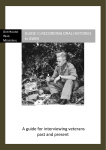
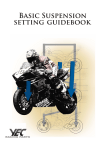
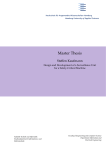
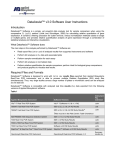
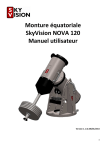
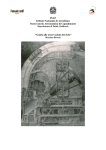
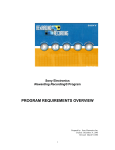
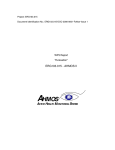

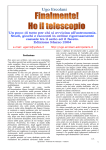

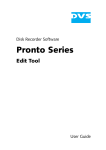

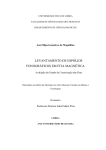
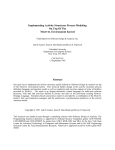
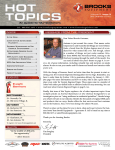
![I COLEÇÕES I.1 Biblioteca Paulo Emilio Salles Gomes [BPESG]](http://vs1.manualzilla.com/store/data/006047856_1-15bf00eb7d4725168984f2b93b1b8def-150x150.png)

